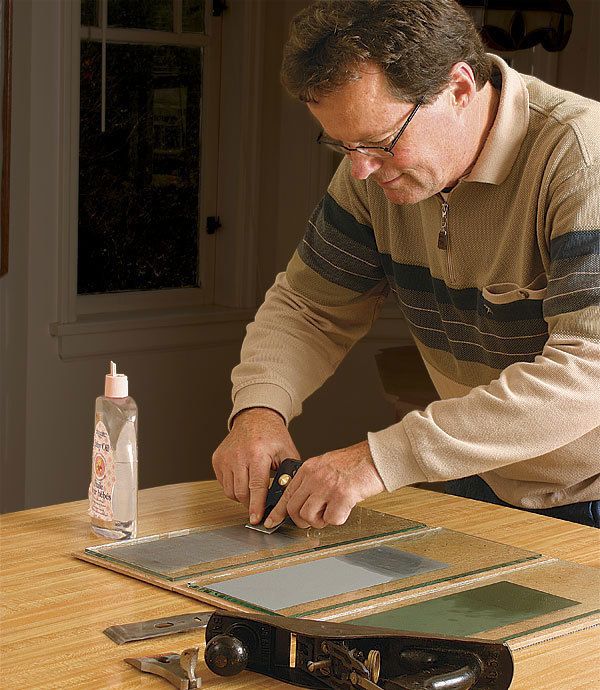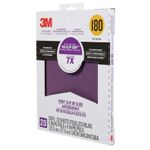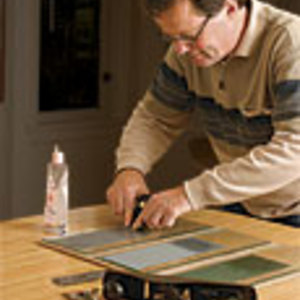Sharpen With Sandpaper
Produce razor-sharp chisels and plane blades in less time, with less mess
Synopsis: How did Brent Beach transform sharpening from a dreaded chore into an easy routine? He switched to high-quality sandpaper as the sharpening medium, along with an angle jig. While not a new technique, sandpaper sharpening as Beach explains it is quick, easy, and effective. Using a commercial jig, high-quality sandpaper on glass, and a technique that adds three microbevels to a tool, it now takes Beach less than two minutes on average to sharpen a dull plane blade or bench chisel, with a perfect bevel angle every time.
For years, no matter what method I used, my sharpening efforts were a disappointment. Then I tried high-quality sandpaper as the sharpening medium, used with an angle jig. To my surprise and delight, the process proved to be remarkably quick, easy, and effective. Indeed, it now takes less than two minutes on average to sharpen a dull plane blade or bench chisel with a perfect bevel angle every time.
Sandpaper sharpening has been around for a long time. As the name suggests, it uses sandpaper as the sharpening medium, rather than traditional oilstones or waterstones. The paper is glued temporarily to a flat surface, such as the top of a tablesaw or jointer, or more commonly of late, a piece of glass.
I now use a commercially available jig for most of my honing, but for a long time my jig was shopmade. I still use the shopmade jig when I want to add a shallow back-bevel to the flat side of a plane blade. The commercial jig will produce a back bevel, but it’s limited to an angle that’s not to my taste.
After switching to sandpaper sharpening, I experimented until I found the technique that worked best. I now use high-quality sandpaper that has a remarkably consistent grit size and an adhesive backing that secures it solidly to the glass. That way, as I sharpen, the paper doesn’t push up in front of the cutting edge and change the sharpening angle. And I add three micro¬bevels, which gets me through the three successive grits of sandpaper more quickly.
Start with three pieces of glass
The sandpaper must be mounted to a flat surface. I use standard window glass. It’s inexpensive, available at any glass shop, and more than flat enough. Because my sharpening procedure requires three different sandpaper grits, I use three pieces of glass, each measuring 5mm thick by 6 in. wide by 16 in. long. A glass shop will cut them to size for you. For safety’s sake, take a few minutes when you get them home to smooth the sharp edges with sandpaper.
To strengthen and protect the glass, glue it to a backer board. I use 1⁄4-in.-thick hardboard (Mason¬ite), but plywood also works. I use a glue called Weldbond, but I suspect that any glue that bonds wood and glass will work. Apply a thin coat of glue to each mating surface, then place the glass on the backer. A few pieces of masking tape prevent the glass from sliding, and a stack of books on top holds it down.
From Fine Woodworking #184
For the full article, download the PDF below:
Fine Woodworking Recommended Products

Bahco 6-Inch Card Scraper

3M Pro Grade Sandpaper

Wen Diamond Grinding Wheel























Log in or create an account to post a comment.
Sign up Log in